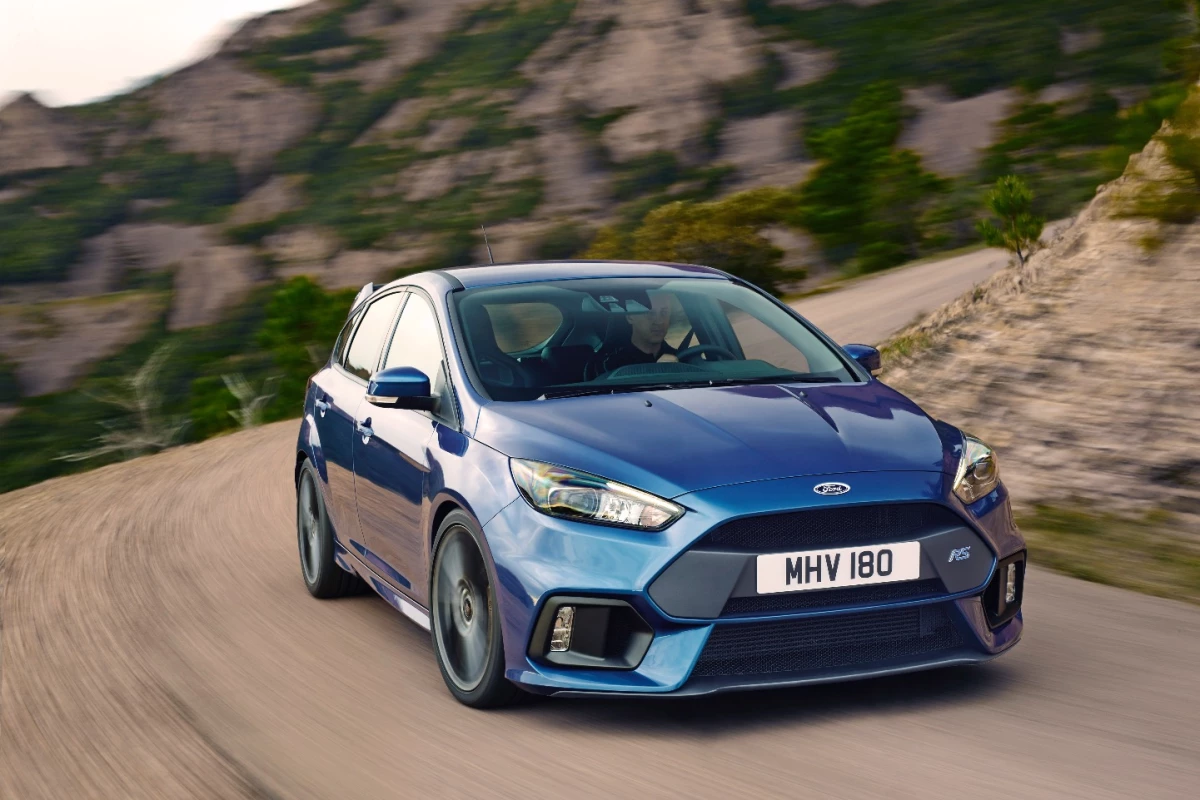With the huge range of hot-hatches on the market, you could be forgiven for not taking much notice of Ford's upcoming Focus RS. After all, on the surface it looks like just another four-cylinder, four-wheel drive turbo tearaway lining up to tackle the Audi RS3 or A45 AMG. But taking a closer look reveals that the RS has the potential to be something seriously special, thanks to the tech crammed into the car's hot-rod bodywork.
Engine
When it was first announced, Ford was expecting the Focus RS' 2.3-liter EcoBoost engine to produce about 315 hp (235 kW) and 475 Nm. The engine is originally from the Mustang EcoBoost, but engineers have cranked the boost pressure up from 18 psi to 23.1 psi for the RS.
The turbocharger is an all-new low-inertia, twin-scroll unit with a bigger compressor wheel that feeds more airflow to the engine and, consequently, more power throughout the rev range. To help handle that extra power, Ford's engineers have fitted the car with a bigger intercooler that maximizes charge density, while the engine breathes more freely through a low-restriction intake manifold.
To make the motor durable over its life, the cylinder liners are made of high-tensile cast iron and the EcoBoost motor's head gasket has been upgraded to deal with the extra heat it produces under heavy load.
Thanks to these upgrades, the engine produces 350 hp (261 kW) and 475 Nm of torque on overboost, putting it right in line with the five-cylinder Audi RS3 and the Mercedes A45 AMG in the power stakes.

Chassis
Whereas the last Focus RS channelled its power through a RevoKnuckle front-wheel drive system, Ford has turned to all-wheel drive for the new car. Instead of using a conventional differential or a haldex system, though, Ford has created a torque vectoring system that manages power forwards, backwards and side to side on each axle. The all-wheel drive system's electronic brain is able to make calculations 100 times per second, so it should be able to keep even the most ham-fisted drivers out of trouble.
Those calculations take steering, throttle, engine speed, lateral and longitudinal acceleration, brake and ESC system status and wheel speeds into account.
The system continuously varies the torque distribution to suit the driving situation. It uses two electronically controlled clutch packs on each side of the rear drive unit to send up to 70 percent of the engine's power to the back wheels.
Not only can it shuffle power between the front and rear axles, but Ford's system is able to send 100 percent of the power on the rear axle to an individual wheel, which can be used to rotate the car on corner entry. That should help to curb understeer, as should the brake-based torque vectoring system that works in tandem with the all-wheel drive system.
Ford is promising the car's all-wheel drive system will help drivers achieve over 1 g in corners, but there's an extra bit of fun to be had in the way the RS' handles. When the car is in Drift Mode, the RS' systems are designed to help drivers go sideways – if you're on a racetrack, of course.

Braking
Because Ford wants RS owners to feel confident on the track, the new car is fitted with 13.78-inch ventilated front discs, up from 13.23-inch discs on the old RS. Those bigger discs are clamped on by aluminum Brembo four-piston monobloc calipers finished in a special shade of RS Blue.
The brakes are cooled by dedicated ducts in the front fascia, twin "Jet Tunnel" vents in the underbody and special airflow guides on the lower suspension arms.
As you can see, Ford has thrown everything it has at its new Focus RS – after all, the new Focus is the 30th car to carry the RS badge, a badge that has graced the flanks of legendary cars like the Escort Cosworth. We're looking forward to getting behind the wheel and finding out if the car's fancy torque-vectoring all-wheel drive works like it says on the packet.
The new Focus RS is expected to hit US showrooms in Spring 2016.
Source: Ford























